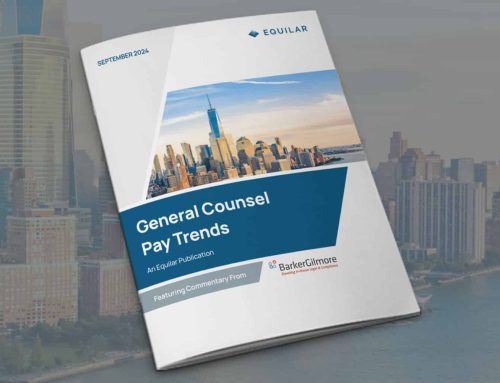Marla Persky, BarkerGilmore Strategic Advisor, Executive Coach, independent board member, and former Senior Vice President, General Counsel, and Corporate Secretary for Boehringer Ingelheim USA, is joined by Laura Stevens, Senior Vice President and General Counsel of Cengage. Marla and Laura share their experiences, lessons learned, and leadership views on how feedback can be a leader’s most effective tool.
Below are highlights from the webinar. To learn more, the video recording, slides, and podcast are available on this page.
Feedback, both given and received, is an essential part of today’s work environment. However, many leaders find all forms of feedback uncomfortable and may even avoid providing feedback altogether in the hopes that employees will inherently determine a means to improve. It begs the question, then, of how managers can give constructive feedback while creating an action plan for continuous improvement. This practice can be equated to a muscle that needs to be consistently exercised, and it is essential for the career growth of the manager and the employee.
Feedback should be actionable, timely, and specific
Even though many recognize feedback as necessary for growth, it is often easier to say nothing at all and hope a problem will improve on its own. This type of mind-reading prevents an individual from improving in a specific area and signals a misalignment in perception between an employee and a manager.
The first step to giving feedback is to prepare; think about the context and understand expectations from both the manager’s and the employee’s perspective. Effective feedback is:
- Actionable: Will the employee be able to take these comments and use them to improve? The feedback given must be deliberate.
- Timely: Feedback should be given promptly but shared during a time when both the giver and receiver can have a productive conversation.
- Specific: If a manager cannot articulate what is needed for improvement, the feedback will be more confusing and unhelpful.
After the feedback is given, the manager should follow up with the employee to ensure changes are made.
“I have found the single most effective tool in giving difficult feedback is doing it in a way that explains how we can partner to help someone take this feedback and get better on it.”
Marla Persky
Feedback should never be a personal attack
There is a distinct difference between feedback and verbal abuse. The person giving the feedback should always allow the other to keep their dignity. Reading the other person’s demeanor is essential to providing constructive feedback, which is why giving feedback in person or via video is preferred, rather than over the phone. Seeing someone’s face and reading their reactions can give insight into how the feedback is received. Considering communication preferences and personality traits can also create a more effective conversation.
“You’re part of a team. Some employees want direct feedback while others will shut down and crumble. So, the key is, number one, to make sure the timing is right and that you are watching and looking at the verbal cues you’re getting from the person you’re giving feedback to.”
Marla Persky
Receiving feedback is about finding the “nugget of truth”
When receiving difficult feedback, arguing with the other person can feel natural. However, the receiver must understand that even if the input is not necessarily helpful, the giver is sharing a perception that exists. This is the “nugget of truth” someone can take and work on to improve while tactfully disagreeing with other aspects of the feedback.
Feedback is not advice. It is all right to walk away if tensions flare and if continuing the conversation may damage the relationship. If the exchange is put on hold in this manner, the person receiving the feedback should follow up to finish the discussion.
Each individual must understand and communicate preferences in receiving feedback, as well as when an emotional limit has been reached.
Key points to keep in mind when receiving feedback:
- If the giver does not have all the facts, it is appropriate to calmly explain anything the person is missing to better assess the feedback being given, rather than arguing.
- Asking specific questions ensures both parties are on the same page.
- Not all cultures give feedback the same way. It’s important to understand how a person’s background might affect the message being conveyed.
“I consider feedback to be pieces of information and observations relevant to the person’s role and their ability to be effective in the role and, sometimes (depending on the employee), to prepare for the next role. So, feedback is intended to have a specific consequence or outcome.”
Laura Stevens
Marla Persky and our team of professionals are happy to help accelerate the initiatives that you’re already pursuing or to supplement your current strategic thinking to help you realize your vision. Please reach out if you or your organization may benefit from our recruiting, leadership development and coaching, or legal and compliance department consulting services. Let BarkerGilmore help you build and optimize your legal and compliance departments.
Connect with a legal recruiting advisor
* indicates required fields







